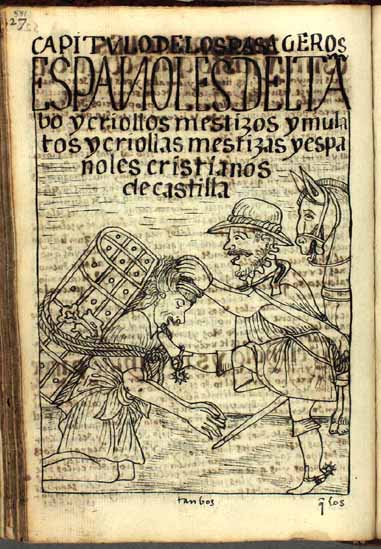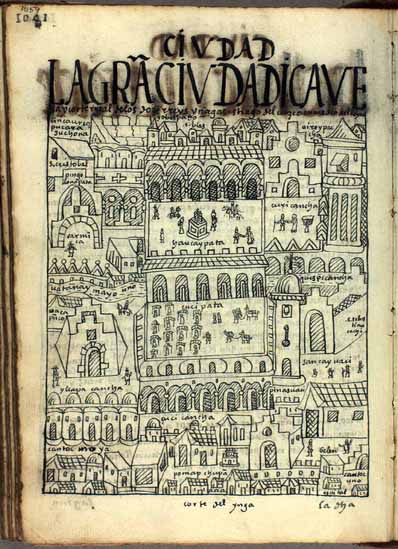The chronicle El primer nueva crónica y buen gobierno contains over a thousand pages of illustrations and written narrative concerning the background of the Incan people and problems in the region. From the perspective of King Phillip III, first of all, the chronicle reveals the intricacies of the Inca culture and history. Furthermore, the text demonstrates the attitude of the Spanish toward the native inhabitants in the region that is frequently unnecessarily cruel and disrespectful. Naturally, the chronicle also provides a different view of the indigenous society from the one that the king is presented by the Spanish mercenaries. When the script was written in 1615, the Incan empire was already conquered by the Spanish conquistadors; however, the unjust attitude toward the native people was still persistent.

The first illustration, ‘The Inka asks what the Spaniard eats. The Spaniard replies: “Gold”‘, concerns the vast differences in priorities between the Spanish colonizers and the Incan people. From the perspective of the indigenous people, gold and other metals were subject to art, religion, and self-expression. Sun is the central point of the Incan beliefs, and gold metalwork generally symbolizes the Incan faith. On the other hand, the illustration clearly represents the obsession of the Spanish colonizers with gold and money. From the perspective of conquistadors, the Incan empire was the source of great wealth that could be claimed with relative ease. According to the drawing, the Spanish were so obsessed with gold that the author decided to depict the metal as food. Ultimately, the distorted desire for wealth has significantly affected the minds of the Spanish colonizers.

The second illustration, ‘A Spanish traveler mistreats his native carrier’, is one of the most powerful drawings in the chronicle. It transparently demonstrates the harsh reality of life in Colonial Latin America and the attitude of the Spanish toward native people. In the drawing, the Spanish traveler kicks the indigenous carrier. It is unclear whether the native person has somehow failed the assigned task or was merely exhausted due to the exploitation by the Spanish people. However, it is evident that the Spanish traveler is unnecessarily cruel toward the carrier, and the worker cannot object to the harassment, for he would have probably been killed for defying the orders.

The last illustration depicts the central city of the Incan empire, Cuzco. Cuzco is a royal city located at more than 11 000 feet above sea level and is the religious center of the kingdom. The image demonstrates the complex structure of the capital with a large variety of buildings, decorations, and activities, implying the liveliness of the city. The masonry and metalwork were highly developed among the Incans, which resulted in the notable architecture that people would admire for centuries. The primary objective of the image was apparently to demonstrate the past glory of the Incan empire and interpret the history of the conquered nation.
Favorite Image
The illustration that impressed me the most is drawing 147. While the rest of the illustrations mostly depict the relevant social issues from the historical perspective, the current image also utilizes literary devices and narrative techniques. In reality, the Spanish colonizers most likely did not eat gold; however, the clever allegory of the author demonstrates the distorted obsession of the conquistadors with the wealth of the nation. Ultimately, compared to other illustrations, the creative approach to drawing 147 has particularly stood out to me.